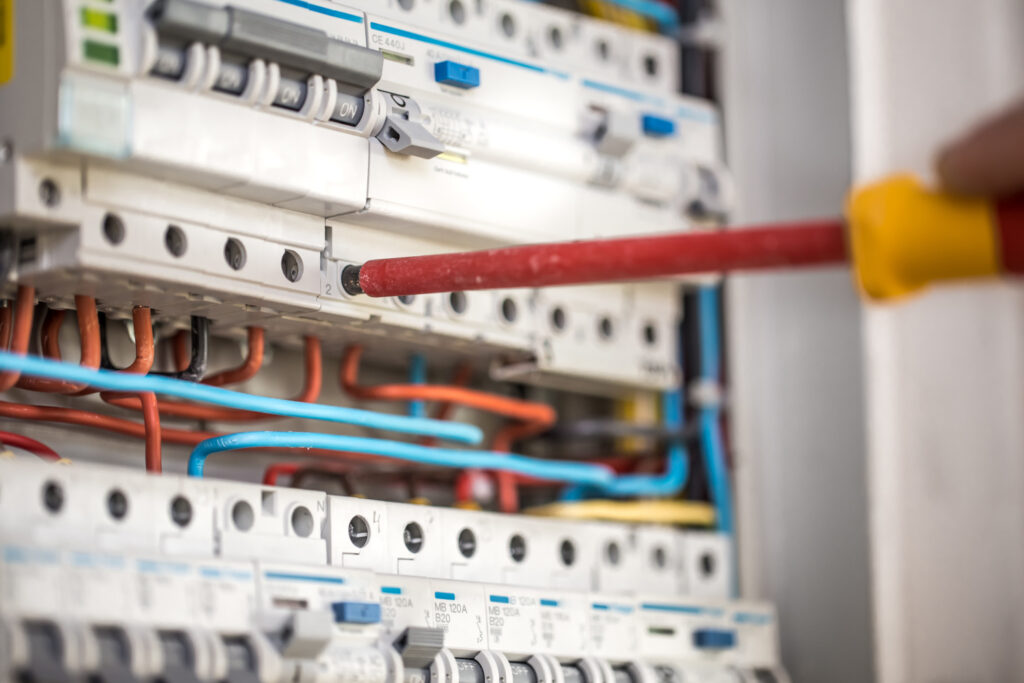What is a fuseboard and what purpose does it serve?
Your fuseboard is at the very heart of your domestic Electrical installation. It may be referred to as a consumer unit or distribution board by those in the trade but each refer to the same thing. In your home it’s where your incoming supply from the Electricity grid is separated into separate circuits and where the individual circuit protective devices are installed.
In the event of a fault, be it an earth fault or short circuit fault then this is where the protective device will likely operate. It is possible that an inline fuse may operate which will localise the fault – e.g a hairdryer plug fuse may operate meaning you need to change the fuse inside the plug and no visit to the fuseboard is needed.
But if a lightbulb fails upon switch on then as the nearest protective device is at the fuseboard we can expect this to operate.

Why should I replace my fuseboard?
Great question, I’m glad you’ve asked.
1) Our consumption and reliance on electricity is ever evolving.
Just look at homes built in the 70’s (or before) and note how many rooms only have single sockets, sometimes only 1 or 2 single socket outlets.
Recently announced legislation dictates that gas boilers can no longer be installed in new build homes from 2025 – so electric based solutions such as heat pumps will become the norm.
EV chargers – These consume large amounts of power and for long durations, your consumer unit must be suitable for this demand.
2) Electrical safety has developed massively in recent years
As technology has improved, we now have a vast array of protective devices at our disposal.
We select these to protect your installation from damage under fault condition, but more importantly to protect end-users by minimising the size and duration of any faults they may be exposed to.
What may have been cutting edge 30 years ago, will likely be woefully inadequate in terms of regulatory compliance and safety today.
For example, all circuits in a new installation must have RCD protection including lighting, this wasn’t the case before 2018.
3) Convenience and prevention of nuisance tripping
When RCDs were in their infancy they were costly to produce, typically most installations only had 1 sometimes 2.
Under an earth fault condition when the RCD operates it could render half or all of the installation out of service, which is far from ideal if your fault on the kitchen sockets means you lose the lighting and have to fumble to find the fuseboard.
With a modern consumer unit with correctly selected devices we can prevent a fault on 1 affecting another, so we don’t need to fumble about in the above given example.
Re-wireable fuses – if you have these then you likely have a very old fuseboard.
To replace the fuses you must remove the old fuse carrier, then replace the wire by dismantling the fuse holder and inserting a new fuse wire before reassembling.
Not particularly difficult…
…providing you have access to adequate lighting, basic hand tools and the correct sized fuse wire.
Is replacing a fuseboard a good investment?
Absolutely.
Financially
When you come to sell your house – lenders will insist on an Electrical Installation Condition Report (E.I.C.R) being performed when their funds are used in a property purchase.
If it returns unsatisfactory, then funds aren’t released until either the issues are resolved or an agreement is in place for the works to be carried out – with a potential lowering of the purchase price being most likely.
A common reason for failure is the lack of protective devices.
Often the most economically viable solution is to replace the entire consumer unit.
Convenience
No losing half or the entire house in the event of a fault.
Ability to identify which circuit is faulty immediately.
No need to rewire fuses…in the dark.
Safety
The level of protection offered to your installation as well as your life by new devices far outweighs any savings made by not upgrading.
Increased number of fault types detected – meaning faults can be detected earlier
Quicker operating times under fault condition – meaning the end-user is exposed to less harmful currents and reduced risk of harm or death.








